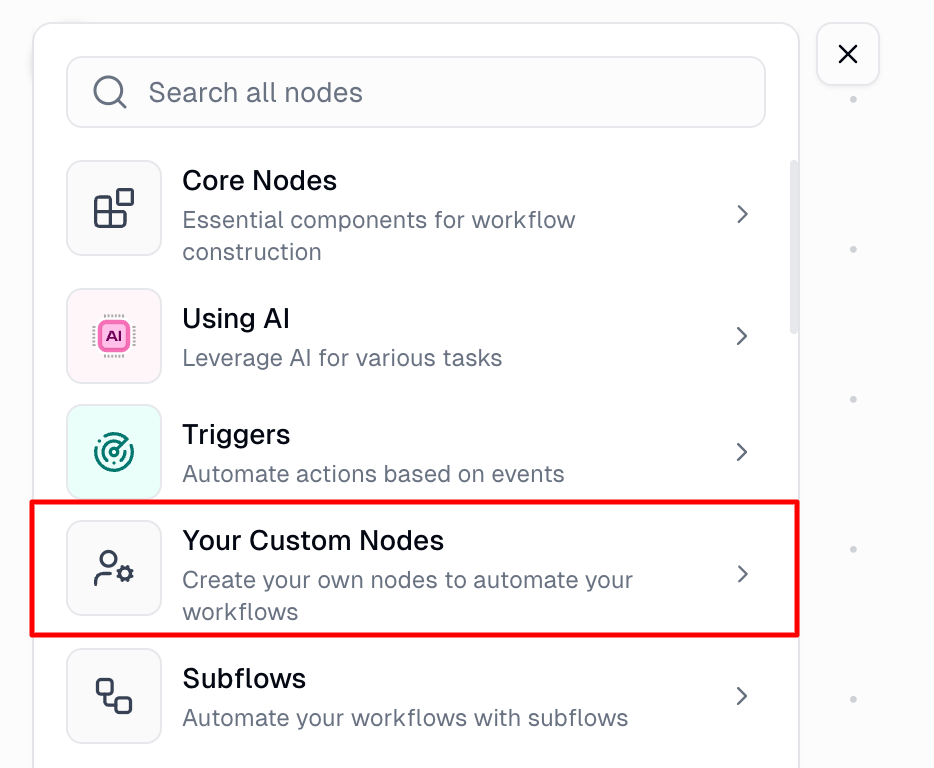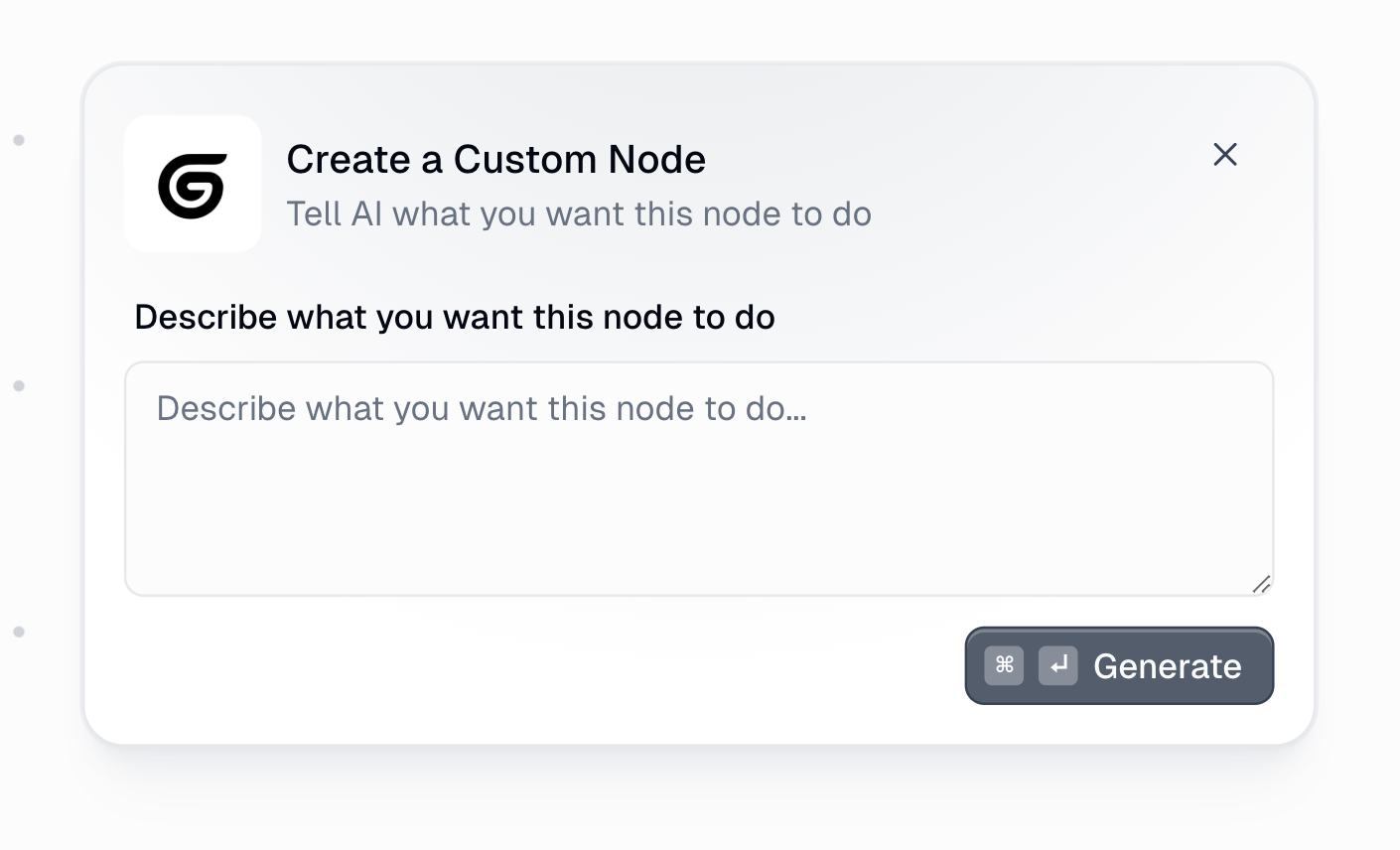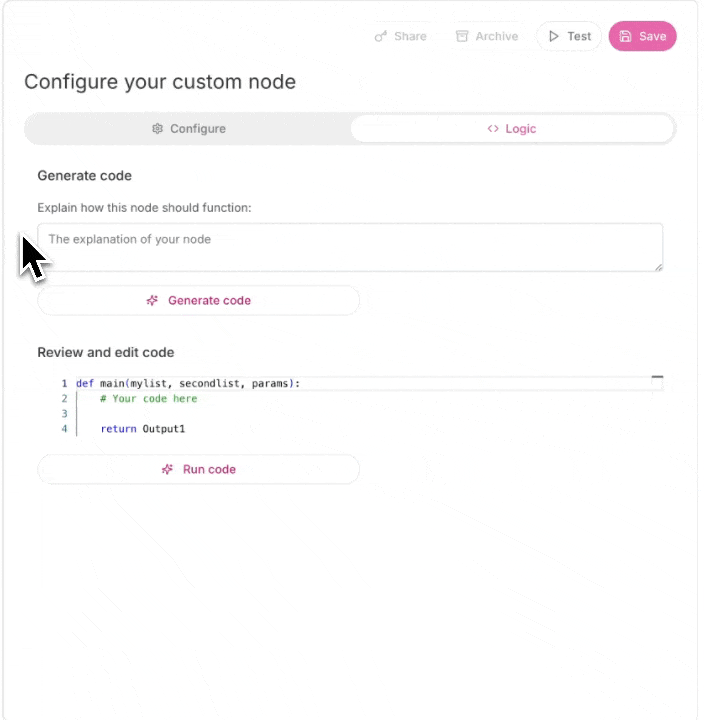What Are Custom Nodes?
Custom Nodes allow you to:- Build your own Gumloop nodes
- Define custom functionality
- Share with your team
- Deploy with one click
- Integrate with any API/service
Step 1:

Step 2: Add a prompt and have AI generate the node for you

Node Structure
Input Options
- Dynamic data inputs
- Multiple input fields
- Custom input names
- Various data types including files
Parameter Types
- Text fields
- Dropdown
- True/false toggles
- Multiselect
Output Options
- Define output format
- Multiple outputs
- Custom naming
- List or single values

When to Use
Use Custom Nodes when you need to:-
Create Integrations:
- Access internal APIs, company tools or custom services
-
Streamline Operations:
- Combine multiple steps and standardize processes
-
Build Missing Features:
- New functionalities, specific use cases or unique requirements
Common Use Cases
- API Integration:
- Data Processing:
- Tool Connection:
Important Considerations
- AI writes the code for you
- Secure credential handling
- As of now the node can only have one editor which is the creator of the custom node
- You can share access to use the node with any email or workspace within Gumloop
- The AI has context to the generated code hence you can simply add prompts or edit requests without needing to switch between Chatgpt/Claude and the code editor

